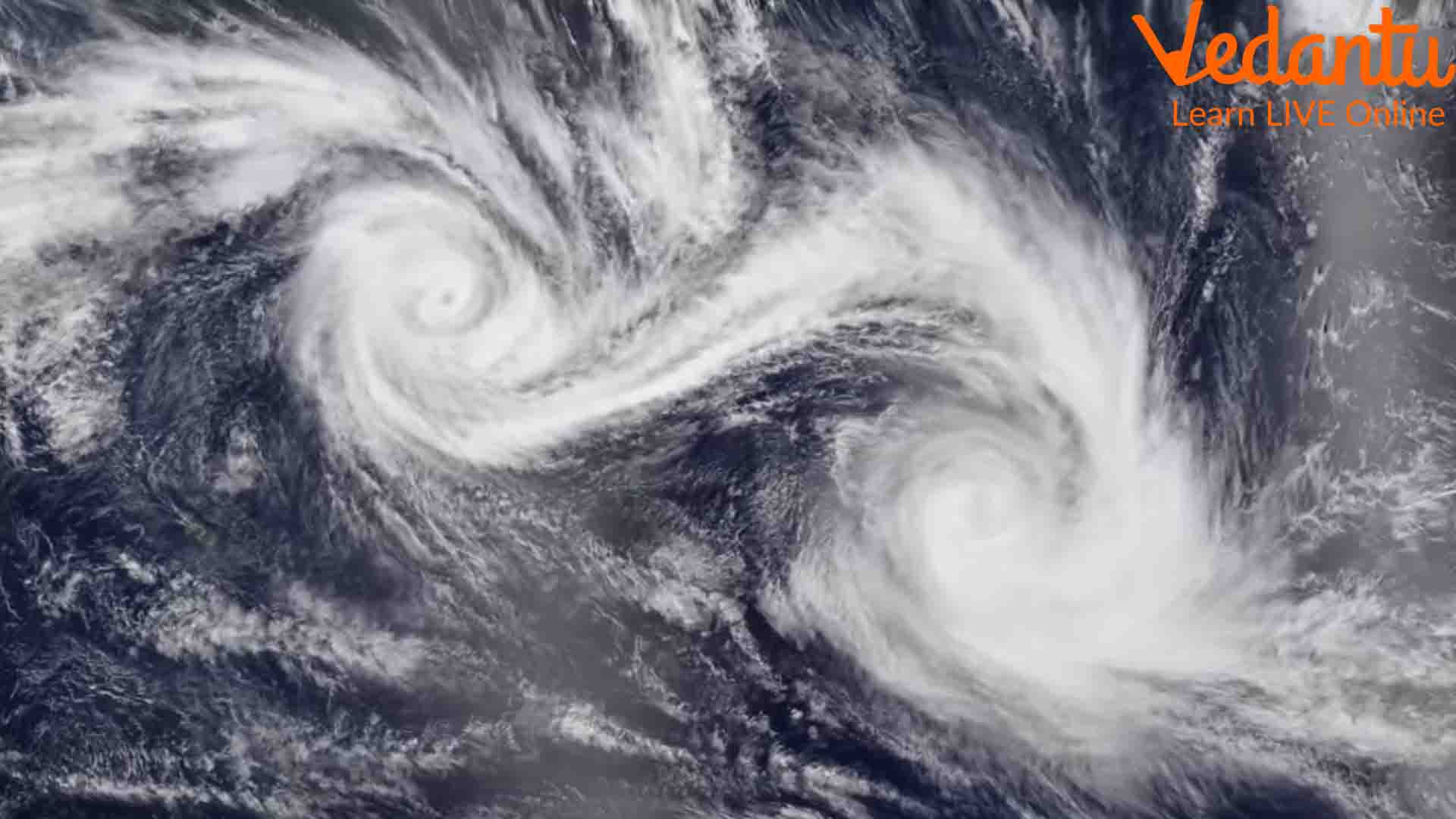Indian Cyclones: What are They and Who Gets to Name Them?
Introduction
We have witnessed the advent of different cyclones in the Southeast Asian part of the world. The countries have to bear the brunt of these violent cyclones. They destroy public properties and claim lives.
We can track the formation and movement of the cyclones and can name them. Fani, Titli, Tauktae, Amphan, etc are the common names. How are Indian cyclones named? Let us find out what a cyclone is first and then proceed to learn how they are named.
What is a Cyclone?
In terms of meteorology, a storm or a system of rotating winds with a centre of low atmospheric pressure advancing from a sea or ocean towards the land is called a cyclone. The speed of a cyclone ranges from 89km/hr to 119km/hr. It is the maximum average recorded.
A large mass of air rotates at a very high speed around a low-pressure zone called the eye. In the Northern Hemisphere, a cyclone rotates counterclockwise whereas, in the Southern Hemisphere, it rotates clockwise. It happens due to the Coriolis Effect. As the pressure difference increases, the speed of a cyclone increases resulting in utter devastation. Some cyclones dissipate when the pressure difference is reduced to a minimum.

Indian Cyclones
How Cyclones are Named?
In the introduction, we have mentioned the names of cyclones that hit the south-eastern part of Asia. How are these names given? Who gives these names? One of the latest names given to one of the cyclones in India is Gulab. It means rose. It is an Urdu word meaning a flower with fragrance.
This name was proposed by Pakistan even though the country will not be affected by the advent of this cyclone. It means there has to be a set of guidelines that the countries follow to give a cyclone name. Every country is given a chance to name the forthcoming cyclones. For example, the cyclone that hit before Gulab was named Yaas. This name was given by Oman.
So, what is the actual rule to decide cyclone names? Why is India not allowed to name a cyclone that hit its eastern coast very recently? This is actually not the fact. The names of cyclones in India will be given by the countries sharing a particular area or a basin.
It means that there are 13 countries in the Indian Ocean basin. All these countries will get a chance to name a cyclone originating in this humongous marine body. It is pre-decided that the countries will chronologically decide the names of cyclones as per their turns.
This is the reason why each country has proposed 13 names. A total of 169 cyclone names have already been proposed before they hit. If a cyclone originates in the Indian Ocean and no matter which country it hits, the name will be given according to the ones that are submitted beforehand. This cyclone name list in India of 169 names has been recently published by the India Meteorological Department (IMD).
History of Cyclone Names
If we look back at the history of naming storms and cyclones, we will find that the Tropical Cyclone Warning Centres (TCWCs) and regional specialised meteorological centres (RSMCs) spread across different countries in a specific basin are the ones to assign cyclone names.
You should know that there are 5 TCWCs and 6 RSMCs in the world. The IMD is one of the RSMCs in the world. They track any abnormal formation of winds that can originate in a storm, cyclone, hurricane, etc.
As an advisory, IMD watches over the formation of cyclones in the Arabian Sea, the Bay of Bengal, and the Indian Ocean. It is also the advisory to 12 other countries in the Indian Ocean basin. Together these 13 countries decide how cyclones are named.
A group of nations formed the World Meteorological Organisation (WMO) and the United Nations Economic and Social Commission for Asia and Pacific (ESCAP). These groups comprise India, Bangladesh, Myanmar, the Maldives, Pakistan, Oman, Thailand and Sri Lanka. These countries started sending suggestions related to cyclone names in 2000. Qatar, Iran, Saudi Arabia, Yemen and the United Arab Emirates later joined, forming a group of 13 countries.
Here is a list of guidelines followed to name a cyclone.
The name should not be related to anything that hurts sentiments. It should be neutral.
It should be free from gender bias, cultures, traditions, religious beliefs, politics, etc.
It should be soothing in nature
It should be easy, short, and clear to pronounce
Maximum of eight letters are allowed for each name.
Once used, the same name will not be used again
India has suggested 13 names that represent something related to storms. The 13 names are Vega, Jaladhi, Ambud, Ghurni, Prabhanjan, Probaho, Jhar (pronounced as Jhor), Vyom, Aag, Muasu, Tej, and Gati.
Amphan got its name from the last list in 2020. A new list with these proposed names has been sent and accepted.
Importance of Naming Cyclones
Adopting names from a given list is easier for people around the world to identify a cyclone. Cyclones occur very often and need to be identified on an international basis. This is the sole reason why a cyclone is named following a convention. The scientific community also finds it easier to identify a cyclone when it does research on the formation of storms in a sea. It also enables us to create awareness and spread warnings.
Conclusion
This is how Indian cyclones are named. Every country in the convention gets a chance to send proposals regarding cyclone names. The names are given based on the turn of a country. All the rules mentioned are followed to keep the names neutral and soothing.







